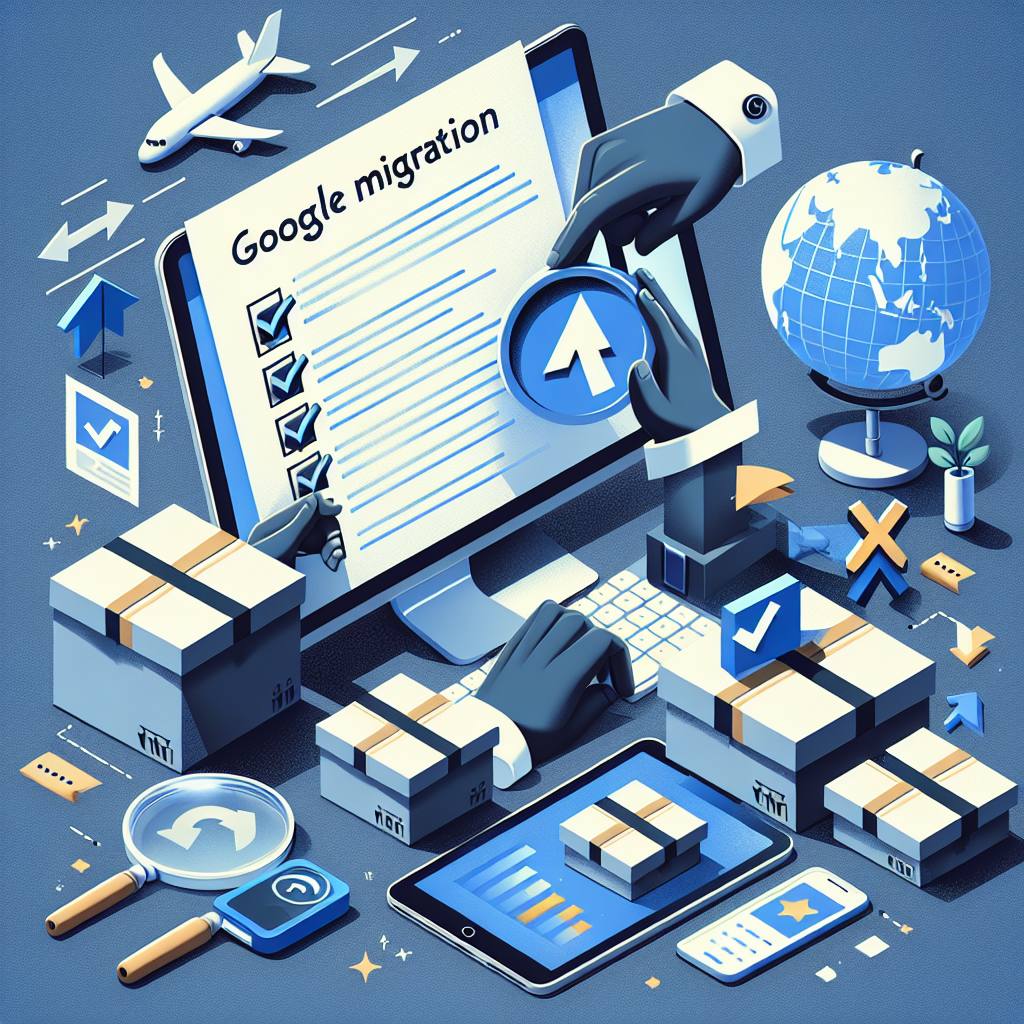Handy Checklist for Your Google Migration
Migrating to Google Workspace (formerly G Suite) can be a game-changer for businesses looking to enhance collaboration, streamline workflows, and leverage cloud-based productivity tools. However, a poorly executed migration can lead to data loss, downtime, and frustrated employees. To ensure a smooth transition, it’s essential to follow a structured approach. This article provides a handy checklist for your Google migration, covering key steps, best practices, and the benefits of leveraging Google migration companies and managed migration services from Movebot.
Why a Google Migration Checklist Matters
A well-planned migration minimizes risks and ensures business continuity. Whether you’re moving from an on-premises system, another cloud provider, or an older version of Google Workspace, a checklist helps you:
- Avoid data loss or corruption
- Reduce downtime and user disruption
- Ensure security and compliance
- Optimize performance post-migration
Partnering with Google migration service providers can further simplify the process, especially for complex environments.
Pre-Migration Planning
1. Define Your Migration Goals
- Identify why you’re migrating (e.g., cost savings, better collaboration, scalability)
- Set measurable success criteria (e.g., zero data loss, minimal downtime)
2. Assess Your Current Environment
- Inventory all data, applications, and user accounts
- Identify dependencies (e.g., third-party integrations)
- Evaluate storage requirements and licensing needs
3. Choose the Right Google Workspace Edition
- Compare Business Starter, Business Standard, Business Plus, and Enterprise editions
- Ensure the selected plan meets compliance and security requirements
4. Engage a Google Migration Service Provider
- Google migration companies offer expertise in handling large-scale migrations
- Look for providers with experience in managed migration to reduce internal workload
Data Migration Strategy
5. Select the Migration Method
- Google Workspace Migration for Microsoft Exchange (GWMME): For Exchange environments
- Google Workspace Migrate: A comprehensive tool for large-scale migrations
- Third-party tools: Solutions like BitTitan or CloudM may be necessary for complex scenarios
6. Prepare Your Data
- Clean up redundant, outdated, or trivial (ROT) data
- Archive historical data if not immediately needed
- Ensure data is properly formatted (e.g., CSV for user imports)
7. Test the Migration Process
- Conduct a pilot migration with a small group of users
- Validate data integrity, permissions, and functionality
- Adjust the migration plan based on test results
User Communication & Training
8. Notify Stakeholders Early
- Inform employees, IT teams, and leadership about the migration timeline
- Address concerns and highlight benefits (e.g., improved collaboration tools)
9. Provide Training & Documentation
- Offer workshops or video tutorials on Google Workspace apps (Gmail, Drive, Meet, etc.)
- Create a FAQ document for common post-migration issues
10. Assign Migration Champions
- Designate power users to assist colleagues during and after migrati
Execution & Validation
11. Execute the Migration in Phases
- Prioritize critical departments (e.g., sales, customer support)
- Schedule migrations during low-activity periods to minimize disruption
12. Monitor the Migration Progress
- Use Google’s migration tools to track data transfer status
- Address errors or delays promptly
13. Verify Data Integrity
- Spot-check emails, calendars, and files for completeness
- Ensure shared drives and permissions are correctly migrated
Post-Migration Tasks
14. Decommission Old Systems
- Retire legacy servers or cloud accounts only after confirming a successful migration
- Keep backups temporarily as a fail-safe
15. Optimize Google Workspace Settings
- Configure security policies (e.g., 2FA, data loss prevention)
- Set up organizational units (OUs) for better user management
16. Gather User Feedback
- Survey employees to identify pain points
- Address common issues (e.g., missing emails, sync delays)
17. Plan for Ongoing Support
- Partner with Google migration companies for post-migration assistance
- Establish an internal helpdesk for user queries
When to Consider Managed Migration Services
For businesses lacking in-house expertise or resources, a managed migration offers several advantages:
- Expertise: Specialists handle complex migrations, reducing errors
- Speed: Dedicated teams complete migrations faster than DIY efforts
- Minimized Downtime: Proactive monitoring ensures smooth transitions
Top Google migration service providers include:
- Google Cloud Partners (certified experts)
- Third-party specialists like Apps Admins, Onix, and CloudM
Common Pitfalls to Avoid
- Underestimating Data Volume: Large datasets require careful bandwidth planning
- Ignoring Third-Party Integrations: Ensure apps like Slack or CRM tools remain functional
- Skipping User Training: Low adoption can negate the benefits of migration
Conclusion
A successful Google migration requires meticulous planning, execution, and post-migration support. By following this checklist, businesses can mitigate risks and maximize the benefits of Google Workspace. For organizations seeking a hassle-free transition, partnering with Google migration companies for managed migration ensures a seamless experience.
Ready to migrate? Start planning today and unlock the full potential of Google’s productivity suite!
Frequently Asked Questions
FAQ
- What is a Google Migration checklist?
A Google Migration checklist is a step-by-step guide to help you smoothly transition your data, applications, and workflows to Google’s ecosystem, ensuring nothing is overlooked. - Why is a checklist important for Google Migration?
A checklist ensures all critical tasks—like data backup, user permissions, and app integrations—are completed systematically, reducing errors and downtime during migration. - What key items should be on my Google Migration checklist?
Essential items include auditing current data, setting up Google Workspace, migrating emails and files, testing post-migration functionality, and training users.
- How can I avoid common pitfalls during Google Migration?
Plan ahead, communicate changes to your team, test the migration in phases, and verify data integrity to avoid issues like data loss or service disruptions.





